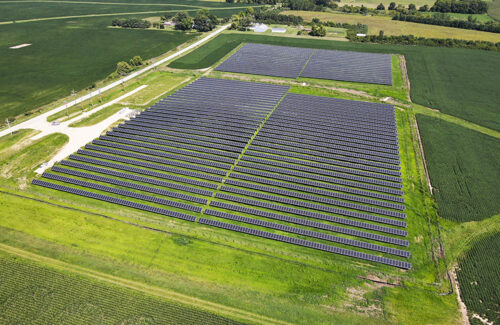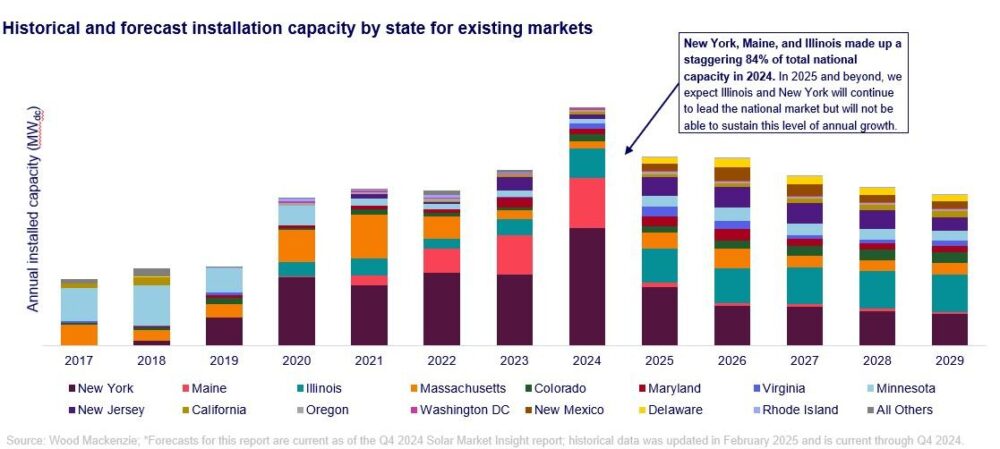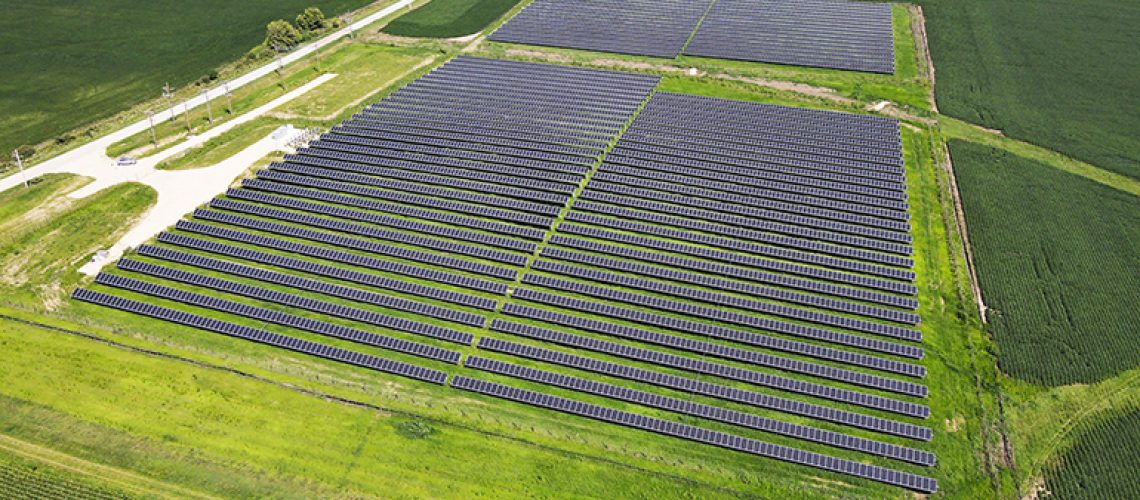
A Nexamp project in New Jersey.
The United States community solar market installed a record-breaking 1.7 GWDC of capacity in 2024, a 35% increase from 2023, according to a new report released by Wood Mackenzie in collaboration with the Coalition for Community Solar Access (CCSA). However, with policy uncertainty at both national and state levels, long-term growth hangs in the balance.
According to the report, last year’s growth was led by New York, Maine and Illinois. All three states broke annual records and accounted for 83% of national volumes. Cumulative community solar installations now total 8.6 GWDC.
“We saw impressive activity in 2024, resulting in our strongest year yet for community solar growth,” said Caitlin Connelly, research analyst and lead author of the report. “However, despite impressive 2024 installation volumes, the top state markets are saturating quickly and will not be able to sustain the same levels of growth long-term. Additionally, emerging markets have been slow to ramp up and program size caps limit the potential for growth in these states to make up for declines in larger markets.”

As a result, in Wood Mackenzie’s base case, national community solar growth will contract 8% annually on average through 2029, culminating in more than 15 GWDC of cumulative community solar installed. However, depending on how policy changes and interconnection reform materialize, the growth outlook could vary greatly.
“Although the new U.S. administration has fueled an extreme amount of uncertainty in the U.S. solar sector, material actions so far have resulted in minimal changes to our base case outlook,” Connelly said. “However, in a low case representing an extreme downside scenario, our five-year outlook contracts 40% compared to the base case. By contrast, business as usual at the federal level and rapidly improving state policy and interconnection conditions result in a high case outlook 37% higher than the base case.”
Potential new state markets
An area of boost could come from new state markets that have proposed legislation for community solar programs. In the last year, legislation in Pennsylvania, Ohio, Missouri, Iowa, Georgia, Washington and Wisconsin has progressed further than ever before, signaling strong bipartisan support and the potential for new market expansion. Community solar is also being incorporated into major state energy plans, such as Pennsylvania’s Lightning Energy Plan, reinforcing its value to lawmakers and regulators. If all comes to pass, new community solar state markets have the potential to boost base case outlook by at least 16% by 2029.
“As opposition persists in establishing new legislatively enabled community solar programs, developers are evolving their business models and exploring new avenues for community-scale development,” Connelly said. “These resources are well positioned to play a pivotal role in supporting grid resilience and increased electricity demand given they can be deployed quickly, scaled quickly, and built with storage in proximity to the customer load.”
LMI customers could expand
Community solar capacity directly serving low-to-moderate income (LMI) subscribers is concentrated in New York and Massachusetts. The two states combined comprise 49% of the 1 GWDC of LMI-serving community solar, highlighting the continued reliance on state and federal incentives to boost LMI capacity. In total, LMI subscribers make up 14% of total deployed community solar capacity.
Stricter LMI subscriber requirements in emerging state markets will result in LMI capacity making up nearly 18% of total community solar capacity by 2026. Federal uncertainty regarding the LMI Communities adder and Solar for All funding could potentially limit the long-term growth of LMI capacity.
Developer and asset owner leaderboards remain highly consolidated
The top five community solar installers secured 19% of the market in 2024, down from 25% in 2023. The competitive landscape for asset owners is significantly more exclusive, dominant and region-specific than that of community solar installers. The top 10 community solar asset owners secured 54% of capacity installed in 2024 and 40% of cumulative capacity. Top asset owners include Nexamp, AES Clean Energy and Nautilus Solar.
“Community solar’s record-breaking growth in 2024 is a clear sign that demand for affordable, distributed energy is stronger than ever,” said Jeff Cramer, CCSA President and CEO. “This record growth comes at a time when customer and grid demand for community solar has never been higher. However, barriers to meeting this demand — such as interconnection delays and policy red tape — are leaving dozens of gigawatts of new local power, tens of billions of dollars in investment and millions of customers on the sidelines. With increasing bipartisan momentum to address these challenges, the potential for continued record growth remains strong.”
News item from Wood Mackenzie



